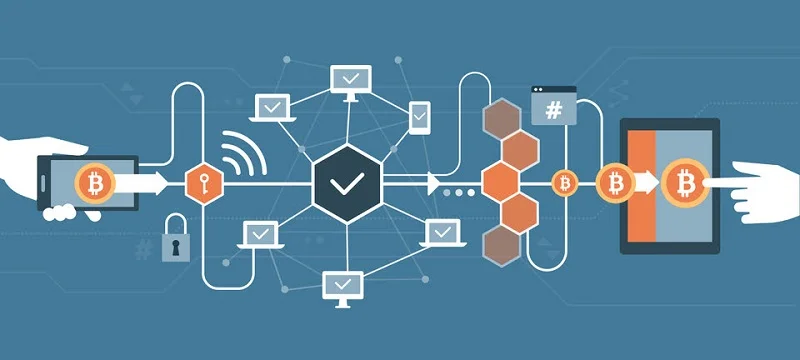Included with all Enterprise accounts, Zendesk Sunshine is an open, flexible CRM platform that’s native to AWS. Sunshine brings all of your customer data together in one place and enables developers and admins to build a better customer experience. When comparing PaaS offerings, find one that aligns with the programming language and framework that your team prefers.
You can access all three via internet browser or online apps available on different devices. A great example is Google Docs, which allows your team to collaborate online instead of needing to work on one Microsoft Word document and send it around to each other. It allows you to deploy your machine, install an OS on it, and set up your applications in a few minutes.
Disaster Recovery for the Cloud
Lastly, it creates some lock-in or dependency on the PaaS provider which may make it difficult to migrate or switch to another provider or platform. It enables companies and developers to plan, create and deploy custom consumer-facing applications and business solutions. PaaS applications require programming knowledge and are developed to perform specific functions. Developers create, deploy and maintain apps while providers manage and house the onsite infrastructure.
Cloud-based human capital management and financial management solutions with centralized systems for HR, finance, and planning. Solutions may be created for industries such as healthcare, energy, communication, education, government, hospitality, and insurance. Solutions that create a more productive environment for employees by enhancing the management of digital workflows for business operations.
When to Use PaaS
Consider building an app on your local drive, then trying to deploy it online — that’s difficult or might take too many steps. Because it provides the greatest amount of control, IaaS tools are also the most hands-on. IaaS firms only provide the servers and its API, and everything else must be configured on your end. Its pay-as-you-go model allows businesses to only pay for the resources they use. Employers offering their employees a telework option can take advantage of all the benefits of this service model.
The cloud computing concept arises from the network diagram mentioning the internet as a cloud. FaaS is also known as serverless computing, because you only pay for the resources you use when your function is executed, and you don’t have to worry about scaling, provisioning, or maintenance. Some examples of FaaS providers are AWS Lambda, Google Cloud Functions, and Azure Functions. Software as a Service is a cloud computing model where software applications are delivered over the internet as a service. With SaaS, users can access and use software applications through a web browser or a thin client without the need for local installation or management of the underlying infrastructure.
Unlocking Your Business Potential: How to Choose the Perfect Content Management System (CMS)
Thus, an IT manager only needs to worry about software usage and employee access to it. SaaS works as a model software- deployed in the form of hosting service that anyone can access (in the form of Output Re-written / Rephrased Text) via the internet or by using a software delivery model. Developers and companies can use the framework to easily and quickly customize apps. As a result, https://www.globalcloudteam.com/ the developers can focus on the application software instead while still not paying attention to managing various infrastructure matters (like software updates, operating systems, etc.). So, the IT managers only need to manage the software/application and remove the rest of the clutter. A few examples of PaaS include Apple Developer Xcode, Google App Engine, Microsoft Azure, etc.

Companies with a high NRR tend to have high customer satisfaction and a good value proposition. Find out how a bespoke software solution from Point100 can solve these common SaaS pain points here. A virtual machine is a virtual representation, or emulation, of a physical computer. Virtualization makes it possible to create multiple virtual machines on a single physical computer. SaaS, Paas, IaaS are not mutually exclusive; most organizations use more than one, and many larger organizations today use all three, often in combination with traditional IT.
Cloud Computing Models
While the customer is in control of the apps, data, middleware, and the OS platform, security threats can still be sourced from the host or other virtual machines . Insider threat or system vulnerabilities may expose data communication between the host infrastructure and VMs to unauthorized entities. The complexity of connecting the data stored within an onsite data center or off-premise cloud is increased, which may affect which apps and services can be adopted with the PaaS offering. Particularly paas saas iaas difference when not every component of a legacy IT system is built for the cloud, integration with existing services and infrastructure may be a challenge. Since SaaS apps often come in a standardized form, the choice of features may be a compromising tradeoff against security, cost, performance, or other organizational policies. Furthermore, vendor lock-in, cost, or security concerns may mean it’s not viable to switch vendors or services to serve new feature requirements in the future.

Telecommunications Hybrid and multi-cloud services to deploy and monetize 5G. PaaS further deepens SaaS’s idea to make it possible to use business software etc. as a service on the Internet, and indeed, PaaS operators often provide SaaS business at the same time. In many cases, it is used in combination by constructing its own business application on PaaS, using common software with SaaS, and so on. Give them a taste of the product, and once they like it, ask them to start paying. Expanding the business can take time, but it also offers many opportunities to increase your NRR by attracting customers through multiple channels.
Difference Between PaaS and SaaS
Cloud file sharing that enables several users in a team or company to save, access and download various files. You don’t need to maintain any hardware or upgrades and there are usually no upfront costs to get started. You can focus on developing your app by giving the vendor the responsibility for monitoring, managing, upgrading and reintegrating components.
- Find out how a bespoke software solution from Point100 can solve these common SaaS pain points here.
- Network Connectivity Center Connectivity management to help simplify and scale networks.
- Companies often use the PaaS platform to build microservices—small, independent apps that perform specific functions.
- While IaaS and PaaS help deliver software solutions, SaaS is something that organizations can both consume and produce.
- SaaS, PaaS, and IaaS are different forms of cloud computing that allow you to purchase resources on a rolling service basis.
But businesses will need to manage their own applications and data. This gives the customizability that many developers look for, while providing the foundation for data protection, storage, and uptime that they desire. Containers as a service, or CaaS, delivers and manages all the hardware and software resources to develop and deploy applications using containers. Sometimes viewed as a subset or an extension of IaaS, CaaS uses containers rather than VMs as its main resource.
Cloud Development
The provider takes care of tasks such as application maintenance, updates, security, and data storage. Platform as a Service is a cloud computing model that provides users with a complete development and deployment environment in the cloud. With PaaS, developers can build, test, deploy, and manage applications without the need to worry about the underlying infrastructure and the complexities of hardware or software setup. Cloud computing is providing developers and IT departments with the ability to focus on what matters most and avoid undifferentiated work like procurement, maintenance, and capacity planning. As cloud computing has grown in popularity, several different models and deployment strategies have emerged to help meet specific needs of different users.